This is the second part of a three-part series about sports in the French Lick and West Baden, Indiana area that appeared in a Fall 2019 edition of “The Greenville Advocate”.
Donald Ross builds French Lick golf course in 1915
In 1915, French Lick Springs Hotel owner Tom Taggart hired renowned golf course designer Donald Ross to build a course at French Lick on the top of several high hills on the south edge of town.
The Scottish born Ross apprenticed at St. Andrews before immigrating and ending up at Pinehurst, NC and from there his course designing career was launched. He reportedly designed or re-designed 400 courses from 1900 to his death in 1948.
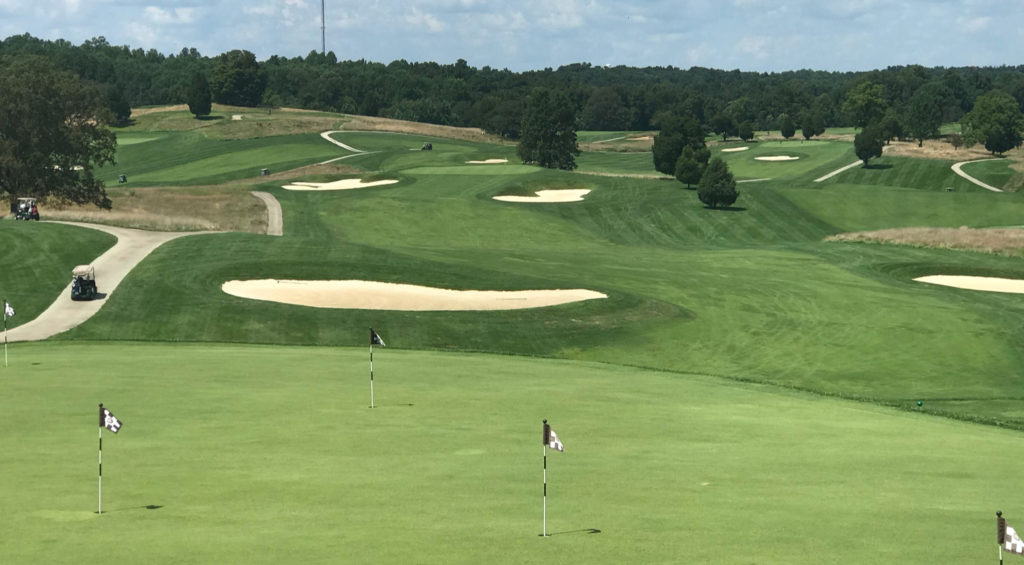
In 1917, the Hill Course was ready for play and has hosted numerous amateur and professional (especially LPGA) events. But the most famous event was when Walter Hagen won the second of four straight PGA Championships. In those days, the events were all match play rather than stroke play.
Currently, the course hosts an annual Symetra Tour event. The Symetra is a path to the LPGA.
In 2007, the course received a $5M restoration and re-opened as the Donald Ross course with a slope rating of 135 and playing at 7030 yards. It can be played today for about $125 a round or $75 in the off-season. Taggart’s home on the property became the club house and today its restaurant bears the name of Walter Hagen.
Pete Dye builds course at West Baden in 2009
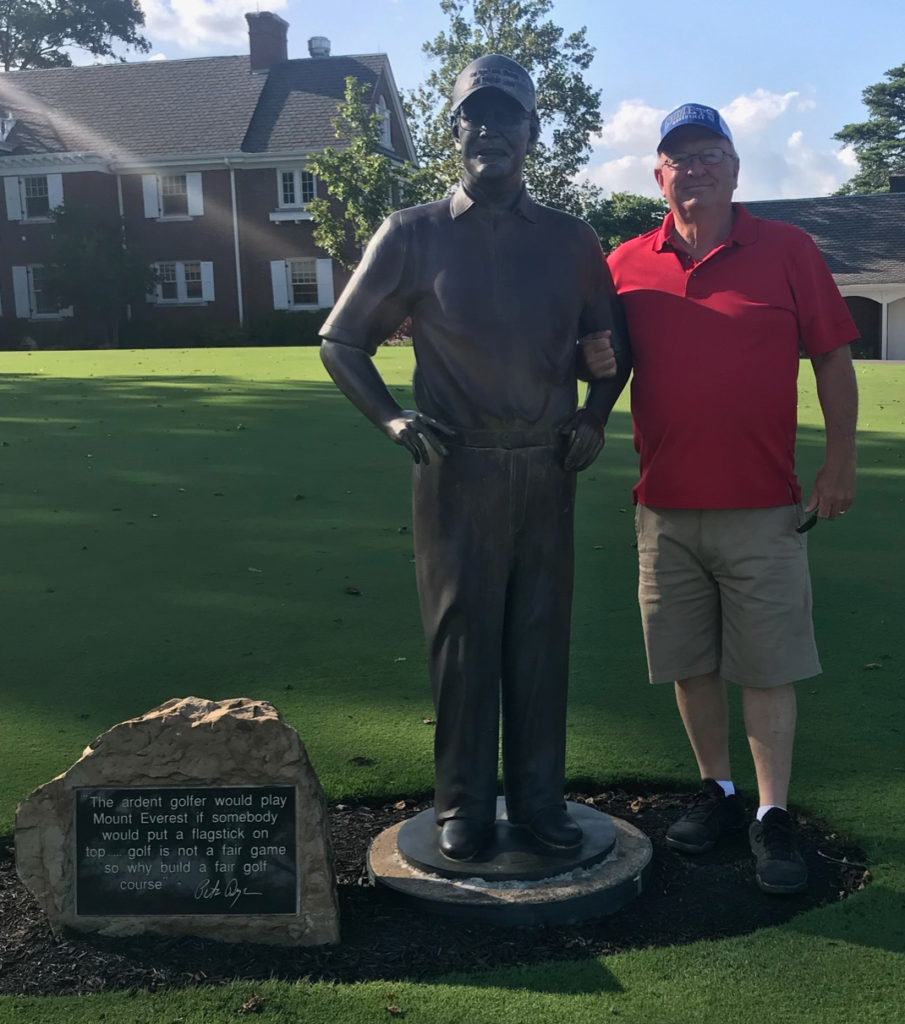
Meanwhile, on the north side of town on some even higher elevations of the Hoosier National Forest, the Pete Dye Course at French Lick was built. It measures 8102 yards with a slope rating of 149 and can be played for $350. It opened in 2009 and is the crown jewel of golf in the Valley.
Dye, of course, was the most prolific designer of the last half of the 20st Century and the early part of the 21st.
When the two Valley resorts became one business unit, the new owners decided that a modern course would be a good addition to the casino and other improvements that were taking place.
Not surprisingly, I observed the Ross course being heavily used on a week-day afternoon while only about a half dozen foursomes could be seen on the Dye course. So, price does matter.
Valley Links Course adapted for soccer/golf – West Baden, IN
I can’t say I’ve ever seen any of my golf playing buddies employ the use of a “foot wedge”, when we were playing, but I am realistic enough to know that balls don’t move from a bad lie to a good one all on their own. Oh, and did I say I don’t trust any of my regular golfing buddies any farther than I can throw them?
A foot wedge, for you non-golfers, would be the illegal use of your foot to kick a ball a few feet, a tactic best applied when your opponents’ heads are turned. An obviously illegal move, but then, this is GOLF: a game you must win at all costs, kind of like war.
The Valley Resorts have tapped into this latent desire to kick the ball, have seen the trend lines for fewer and fewer young golfers; have seen the corresponding increase of more and more soccer players; and have added Foot Golf to the Valley’s activities. It is a great idea!
They have a course designated for using your feet. The Valley Links Course was built as an 18-hole tract, but over the years the land became too valuable, and nine holes were eliminated from the course and the remaining nine holes were adapted to also accommodate the new soccer-style golf game. I didn’t try it, but I think if I were not a golfer, this is the only way you would get me to go on a course.
I have golfing friends: a preacher, a teacher and a couple of farmers, who I suspect could make the foot wedge Hall of Fame, if there is one. So, I think I’ll suggest Foot Golf to them.
Hagenbeck-Wallace Circus came to town – West Baden, IN

Not that the hotel owners weren’t competitive because they were. While one was building a golf course another was buying a circus. In the early 1900’s, West Baden Springs Hotel owner, Ed Ballard, was a part owner of the second largest traveling circus in the country, the Hagenbeck-Wallace Circus; second only to Barnum-Bailey Ringling Brothers.
In 1915, Ballard bought out his partners and the circus spent winters in the Valley until 1924 and other circuses wintered there until 1930. When not on the road, they filled the town with circus tents, performers and animals.
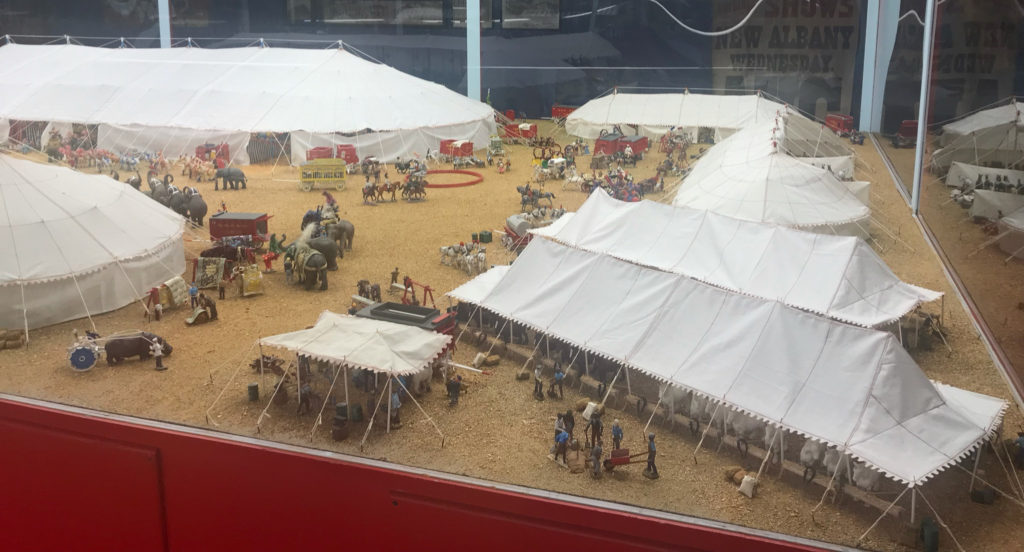
Circuses moved by train in those days and one other previous Valley hotel owner had the political clout to get the Monon Railroad to build lines into the Valley, making it easy for circuses to access the area. Tourists were also readily connected from cities like Chicago, Indy, Louisville, Detroit and St. Louis.
The large atrium of the West Baden Resort was frequently used for circus performances mostly during the holidays. Several famous performers worked for Hagenbeck-Wallace including: Joe Skelton, father of Red Skelton, who also performed with the circus until he went into vaudeville. Emmett Kelly got his start as “Weary Willie” with H-W during the Great Depression before moving on to other circuses.
H-W Circus train involved in 1918 wreck; 86 die – Gary, IN

That same circus, just three years later, made history as part of one of the worst train disasters in railroad history.
At 4:00 a.m. on June 22, 1918, as WWI was winding down, the circus’s train had mechanical difficulty and was stopped near Gary, Indiana. The first half of the train with animals was sent ahead leaving four cars loaded with 400 sleeping performers and workers parked on the main line. The appropriate signals and warnings had been posted on the track when an engineer of an empty troop train fell asleep and plowed into them.
Railroad cars were made of wood and used oil lamps, so the results were awful. Most of the 86 who were killed, perished in the first 35 seconds after the collision. One hundred twenty-seven others were injured. Many who survived the collision, but were trapped in wreckage, died as fire swept through the train.
Five days later, 56 bodies were buried in separate coffins in a mass grave in Woodlawn Cemetery in a section now known as Showmen’s Rest. Only five were identified.
In the heart of the Depression, owner Ballard sold the circus to Ringling Brothers in 1929 for $1.7M, severing their connection to the Valley.
The circus only missed two performances as other circus performers rallied around to help them. In the truest show business tradition, the “show went on”.
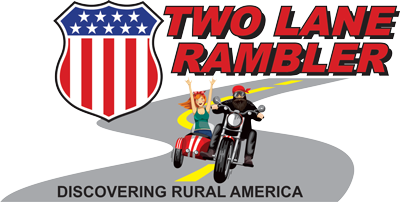
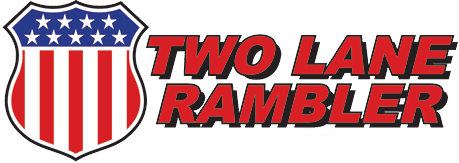

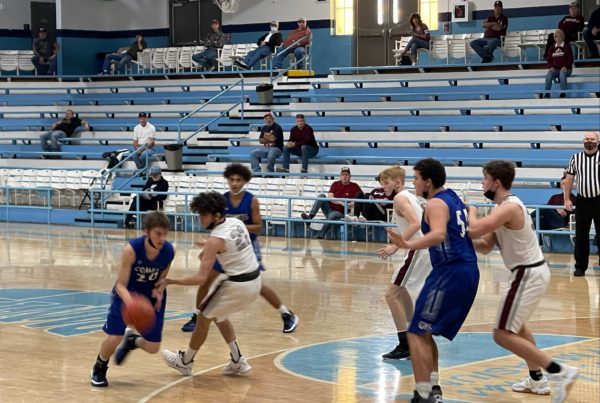

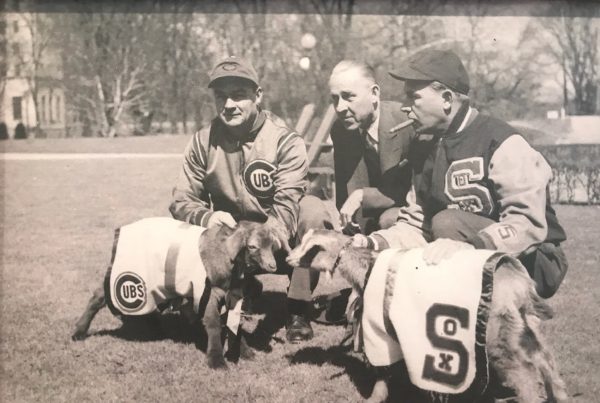
Join the discussion One Comment